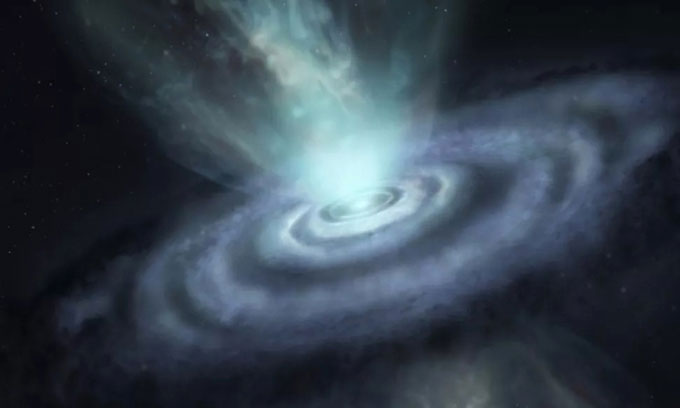Astronomers Discover Red Giant Star V Hydrae Emitting Strange Fog-Like Rings Before Exploding.
When stars with small to medium masses exhaust their hydrogen fuel in the core, the external pressure becomes unbalanced with the internal gravitational force, causing them to collapse. At this point, the plasma shell surrounding the core becomes hot enough to start synthesizing hydrogen, generating heat that significantly expands the outer layers of the celestial body, transforming it into a red giant star.

Simulation of V Hydrae expelling material into space. (Image: ALMA/S. Dagnello)
V Hydrae is one such object. It is located approximately 1,300 light-years from Earth and is entering its final evolutionary stage before collapsing into a white dwarf. During this phase, stars draw material from their cores and eject it into the surrounding space.
In a new study published in the Astrophysical Journal, astronomers report that V Hydrae is emitting six fog-like smoke rings, along with a massive hourglass-shaped structure. This discovery is based on observations from the Hubble Space Telescope and the Atacama Large Millimeter/submillimeter Array (ALMA) in the Atacama Desert of Chile.
According to the lead author of the study, Raghvendra Sahai from NASA’s Jet Propulsion Laboratory, the hourglass structure consists of two clouds of material and a jet stream ejected from the two poles of the star at speeds of up to 240 km/s. This structure is perpendicular to the plane containing the mysterious smoke rings.
The hourglass-shaped clouds are not a completely new discovery. Astronomers have observed similar phenomena in the Southern Crab Nebula, located 6,849 light-years from Earth. At the center of this nebula is a binary pair, consisting of a white dwarf and a red giant star.
In addition to the mysterious smoke rings and hourglass cloud structure, V Hydrae also emits super-hot gas explosions, or plasma, approximately every 8.5 years. The research team suspects that these strange behaviors may be related to a companion star, although its existence has yet to be confirmed.
“The activity of V Hydrae is noteworthy because one day, our Sun might face a similar fate,” emphasized co-author Mark Morris from the University of California. Monitoring the behavior of such objects will help astronomers gain a better understanding of what happens during the final evolutionary stages of stars.

















































